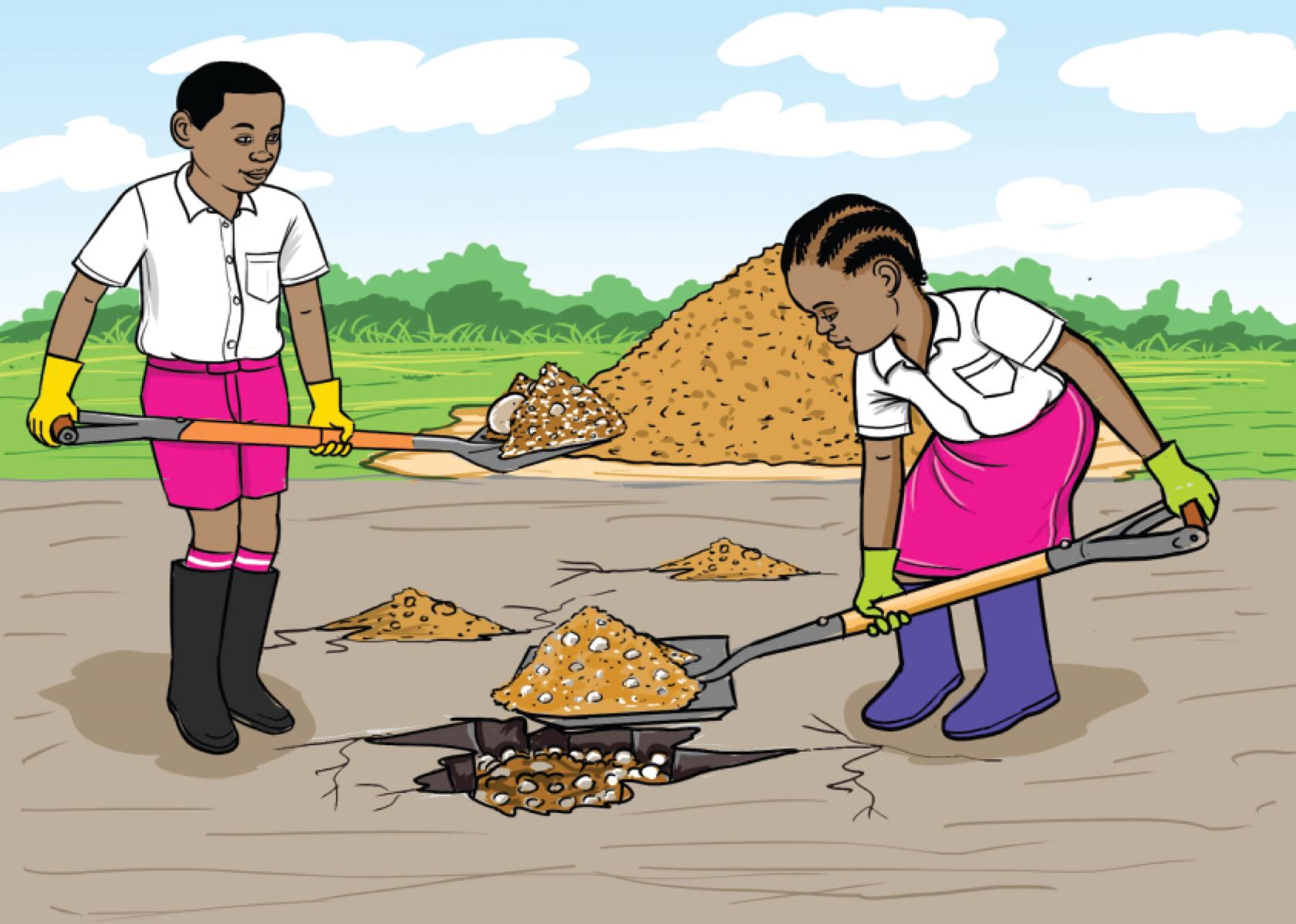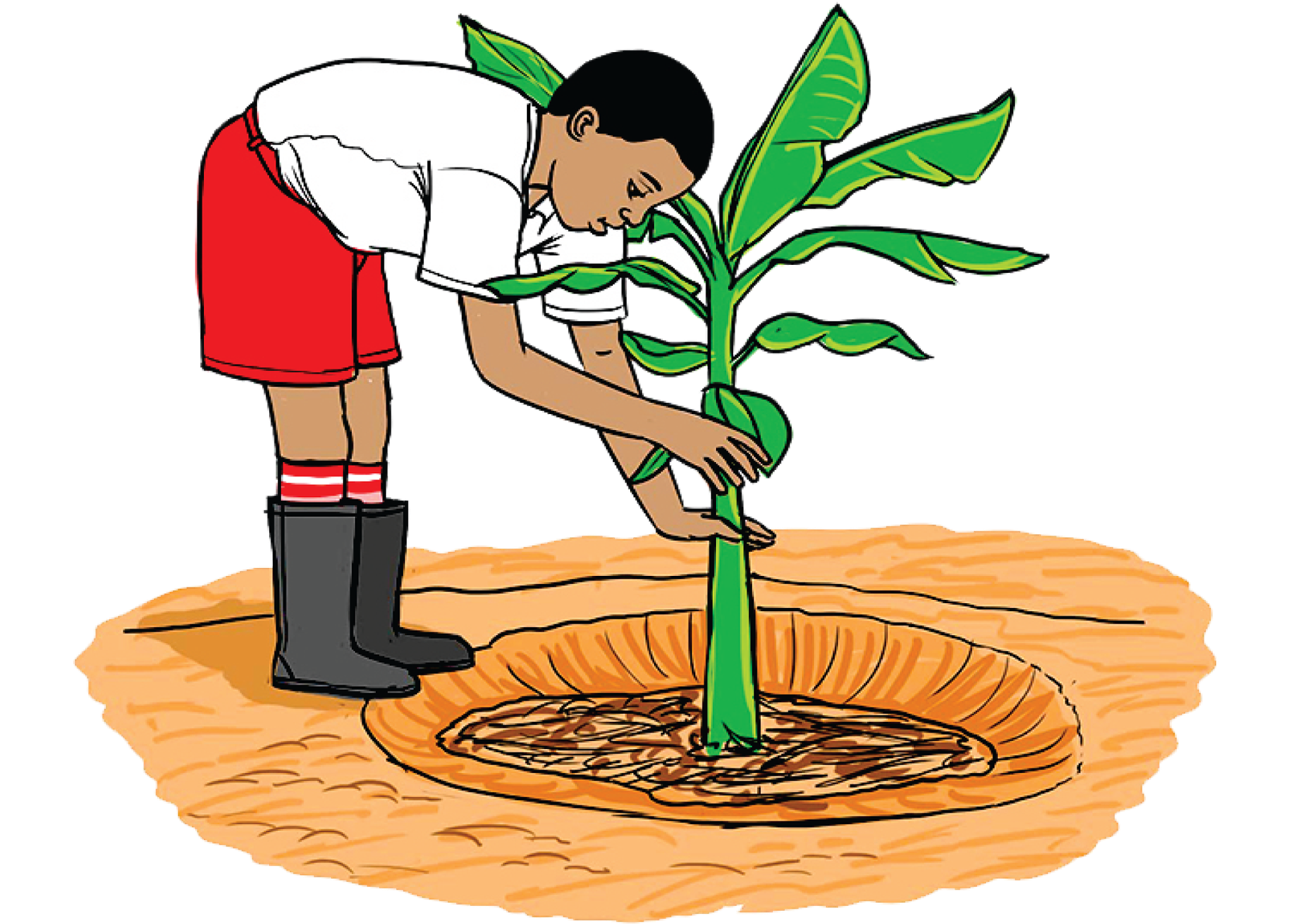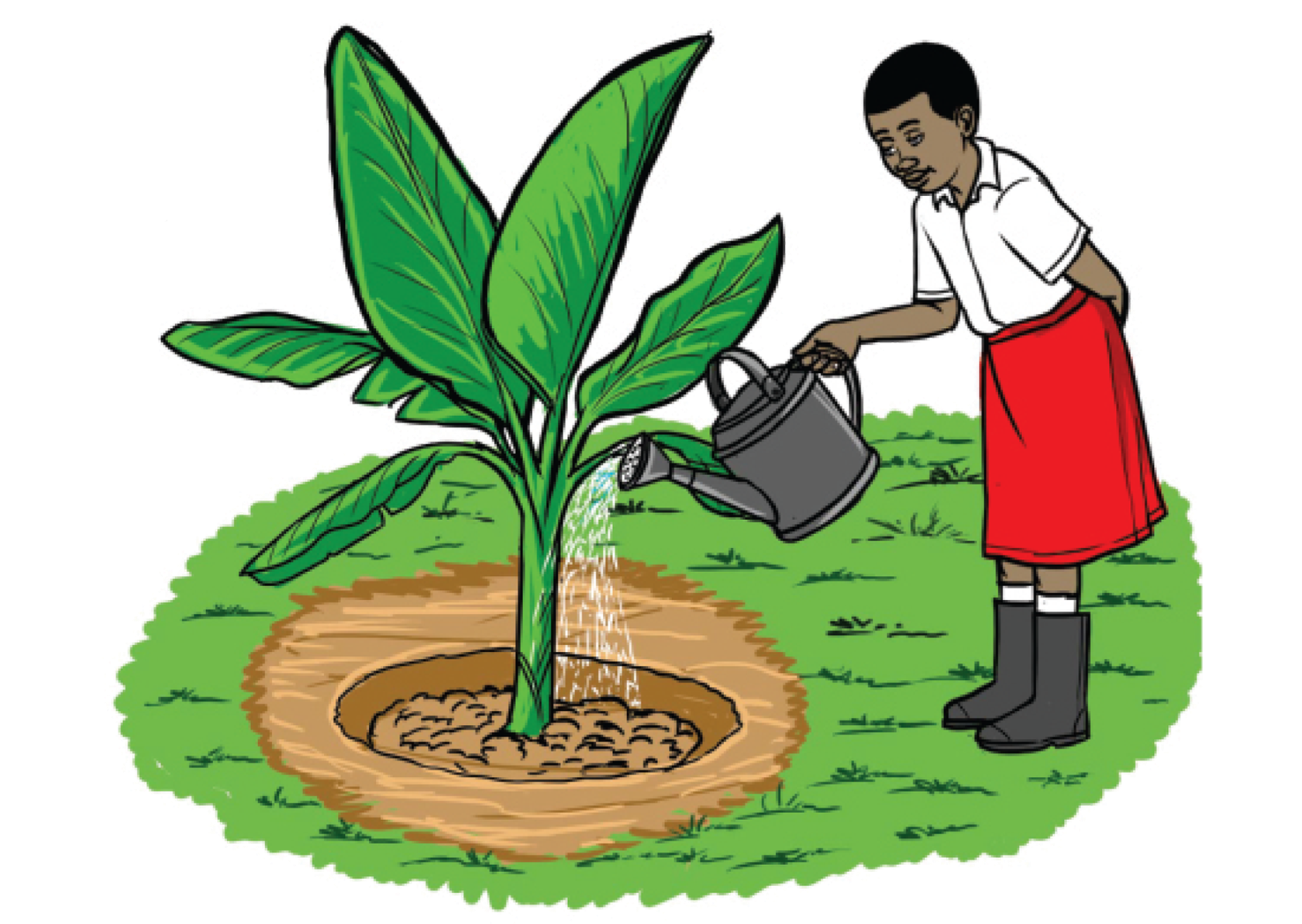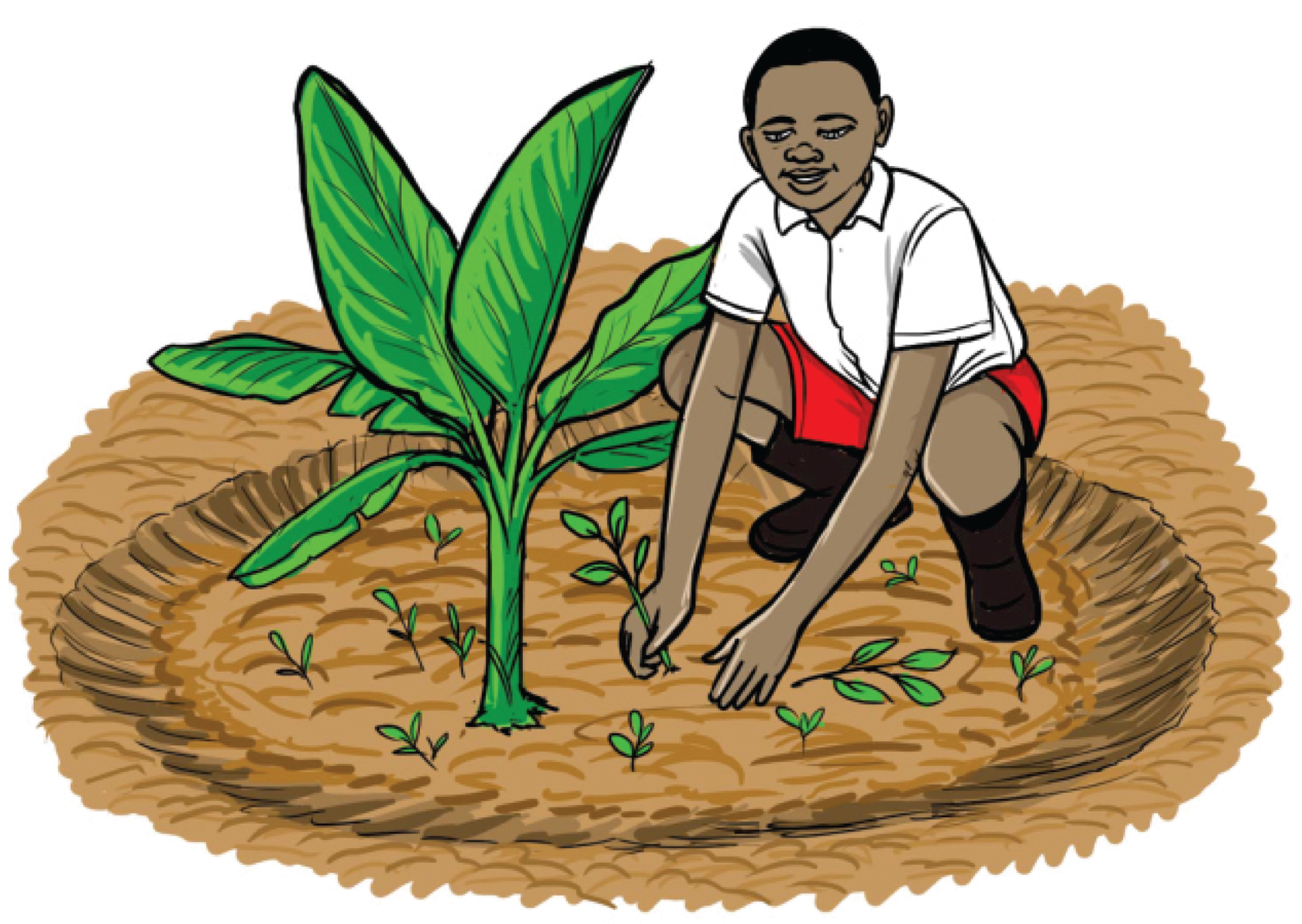In Grade 4, we learnt that soil is very important because it helps the plants to stand firm. Soil also provides air, water and nutrients which plants need for their growth. Therefore, if soil is lost, the growth of plants will be affected. Human beings and animals will also be affected because they depend on plants. We will therefore learn how to conserve soil.
Soil recovery
Activity 1: Work in groups
How can the top soil be lost?
Observing runoff
Look at the photograph which was taken after a period of heavy rainfall.
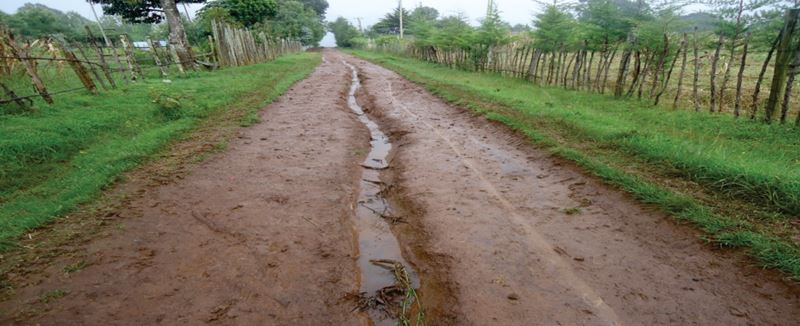
- What can you see in the photograph?
- Have you seen something similar to what is in the photograph on page 1 in your environment?
- How does this affect our soil? Share with the rest of your class.
Activity 2: Work in groups
Demonstrating runoff
- Select a site within the school compound with bare soil.
- Pour water from a jug or a watering can slowly on the bare soil until water starts flowing on the ground surface.
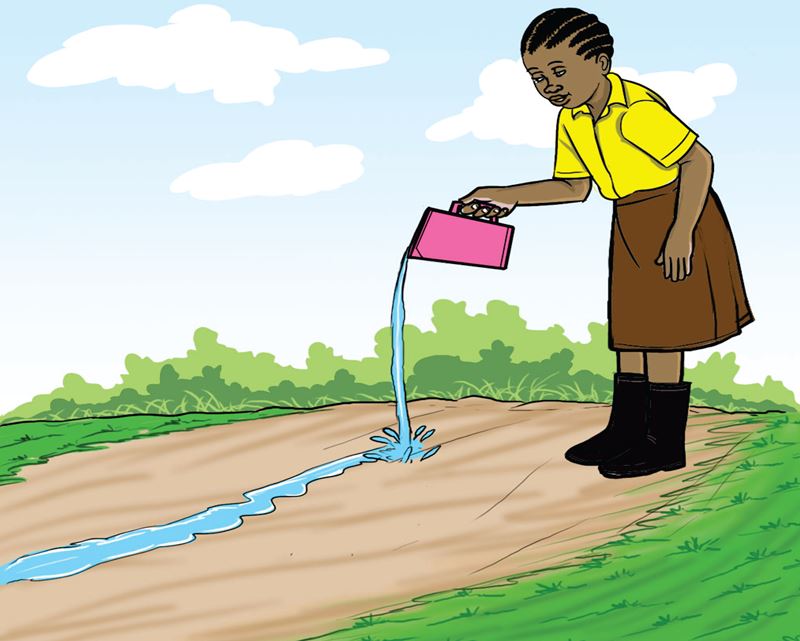
Let us talk. In pairs
- Why does some water start flowing on the land surface after some time?
- What name is given to the excess water that flows over the soil surface?
- What problem does the flowing water cause to the land?
Let us learn
When there is too much water on the soil surface, some of the water is not absorbed by the soil.
The excess water flows on the ground surface. This water is called runoff. The runoff erodes the top soil. The process by which top soil is removed and carried away to other places is called soil erosion. Soil erosion leads to loss of nutrients in the soil and hence poor growth of plants.
Activity 3: Work in groups
Identifying eroded sites
Walk around your school environment and identify eroded sites.
- How are eroded sites different from other non-eroded sites?
- What may be the cause of soil erosion in the places that you have identified?
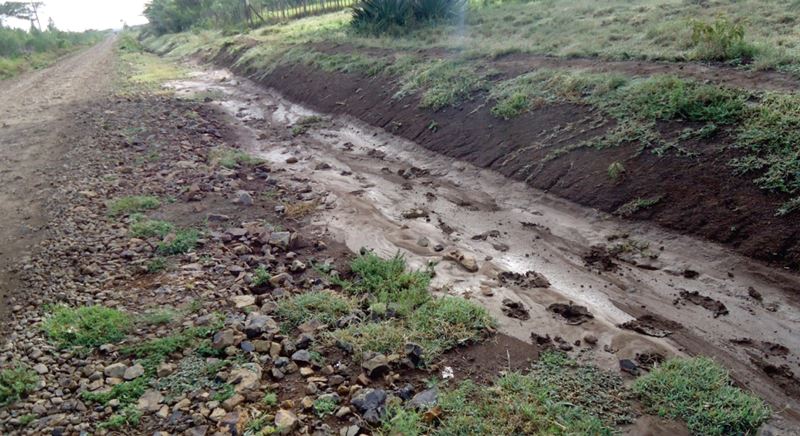
How should we conserve soil?
Collecting soil from soil deposition sites
- With guidance of your teacher, walk around your school environment. Find places where soil has been deposited after erosion has taken place.
- Using a spade, scoop out the deposited soil and put it into suitable containers.
- Carry the collected soil to the classroom and place it in the agriculture section.
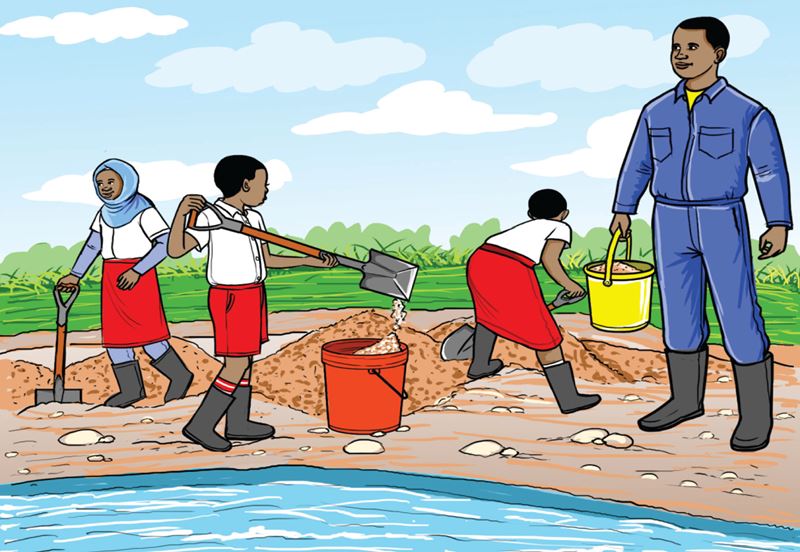
Caution
You should observe safety precautions as you carry out this activity.
When collecting soil deposited near a riverbank or in ditches, wear gumboots. This activity will be done with the help of the teacher.
Let us talk. In pairs
- Why should we conserve soil from erosion?
- How can we ensure that the eroded sites look almost like they were before soil erosion took place?
- How can we use the soil we collected from soil deposition sites in our environment?
Using recovered soil for farming
Activity 5: Work in groups
Using recovered soil for farming
Let us talk. In pairs
- What is soil recovery?
- What are the benefits of doing soil recovery? Share with your partner and then present to the rest of the class.
Let us learn
Soil erosion leads to loss of the top soil. This lowers soil fertility. We should therefore take care of our top fertile soil by conserving it.
One way of conserving soil is through soil recovery.
Soil recovery is the process of collecting soil from soil deposition sites and using it to replace the lost top soil.
Summary
Take home activity
- With the help of your parents or guardian, identify eroded sites as well as soil deposition sites in your home environment.
- Recover the lost soil from the soil deposition sites and use it to grow a crop of your choice.
- Find out how your neighbours conserve the top fertile soil. Then, advice them how to carry out soil recovery.
1. The process by which soil is moved by wind or water from one place to another is called
2. After heavy rainfall, some water does not sink into the ground.
It runs on the ground surface. This water is called
3. Mrs. Juma noted that soil in her plot of land had been eroded by floods. Mark the places where she is likely to collect soil to replace the lost soil on her land.
- in ditches
- on a hill
- near a riverbank
4. Give a reason why we should conserve soil.
